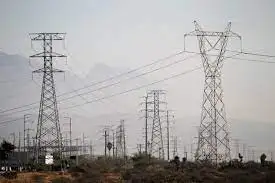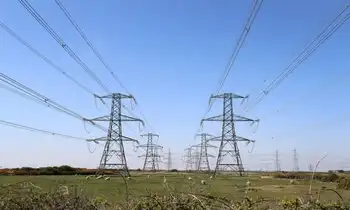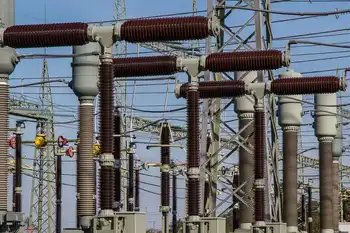Clean energy invested at HSPP
By Coast Reporter
CSA Z463 Electrical Maintenance -
Our customized live online or in‑person group training can be delivered to your staff at your location.

- Live Online
- 6 hours Instructor-led
- Group Training Available
John Weston, member of Parliament for West VancouverSunshine CoastSea to Sky Country, was on hand at HSPP to make the funding announcement under the Pulp and Paper Green Transformation Program PPGTP for HSPPs evaporator capacity increase project. This project will allow the mill to improve its environmental performance by increasing energy efficiency and production of renewable energy.
The mill plans to invest in a series of upgrades to its evaporator to redirect more steam for the production of electricity and to realize overall efficiencies in the equipments operation. By augmenting its renewable energy production, the mill is reducing its reliance on natural gas, which will lead to a reduction in greenhouse gas emissions. The upgrades are also expected to produce an excess of 8,200 megawatthours of electrical power enough energy to power 800 homes a year which the mill plans to sell to BC Hydro.
This project shows that smart investments can increase a mills ability to improve its environmental performance and produce clean energy, while providing important forest products for consumers, Weston said. The Green Transformation Program is helping the Sunshine Coasts pulp and paper sector become more environmentally sustainable by supporting innovation and investments in green technologies.
HSPP is one of 24 pulp and paper companies across Canada that qualified for credits under the $1billion program, based on their 2009 production levels of black liquor a liquid byproduct of the pulping process used to generate heat and power.
HSPP qualified for $45 million of funding under the program the $6 million is just one in a series of announcements and projects HSPP will roll out in the coming months.
What the federal government has done for the Canadian pulp and paper industry is tremendous, said Mac Palmiere, president and CEO of HSPP. The program is bang on for what it should have been. It forces the industry to reinvest through supportive grants, which is much different than the subsidies in the U.S. where they just use it for their balance sheets. And it gives us the future competitiveness we need, so Im really excited about the whole program.
This first step toward diversifying HSPPs product line to include clean energy will enable the mill to take advantage of opportunities in Canadas bioeconomy. Environmental and commercial sustainability will, in turn, also help the mill maintain 450 jobs.
Its great news for us, and I want to thank John for his role in helping this program get wheels because he was very significant in Ottawa in terms of doing that, said Al Strang, manager, environmental and external relations with HSPP. The program really gives us an opportunity to invest money to secure our future and secure the jobs jobs that were in peril. The project that we have planned will result in us becoming the largest renewable electricity producer in the province. Were really proud of it and its going to really help solidify our viability and secure the 450 jobs that are so important to our community.











